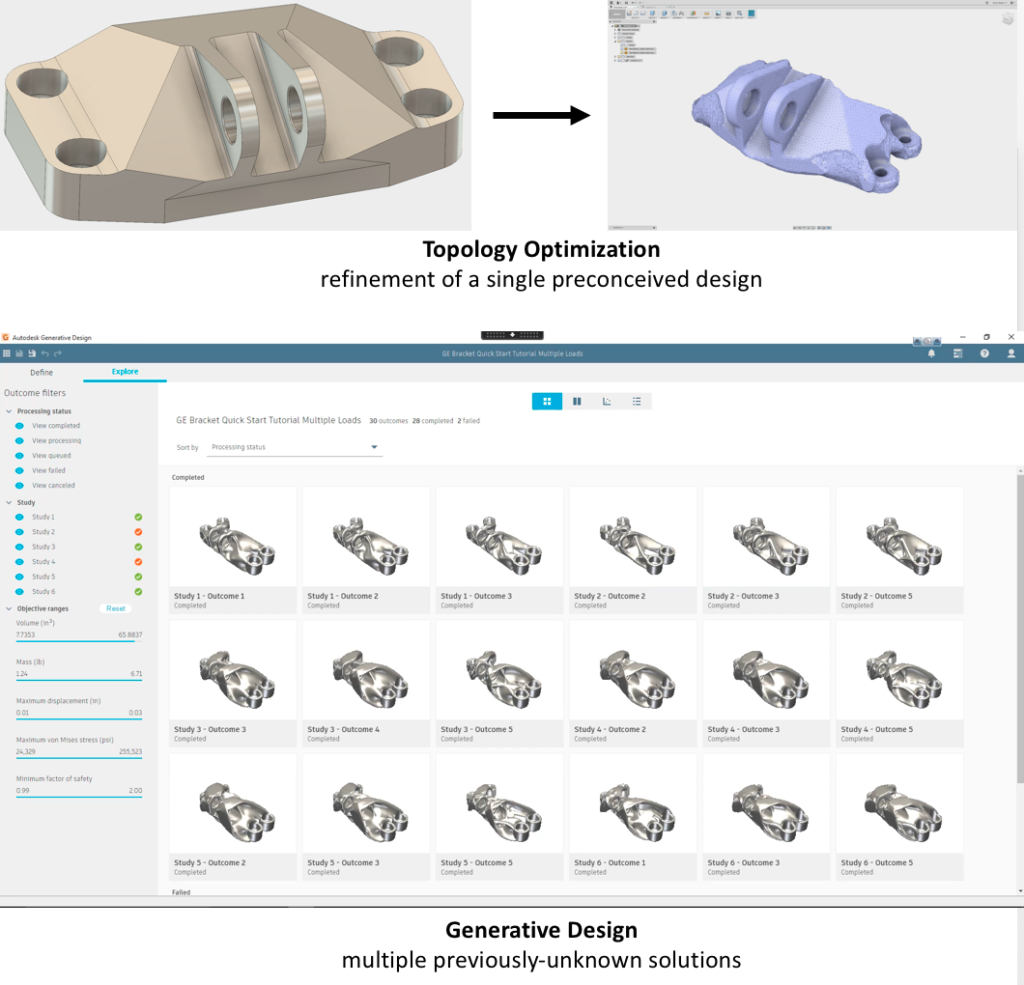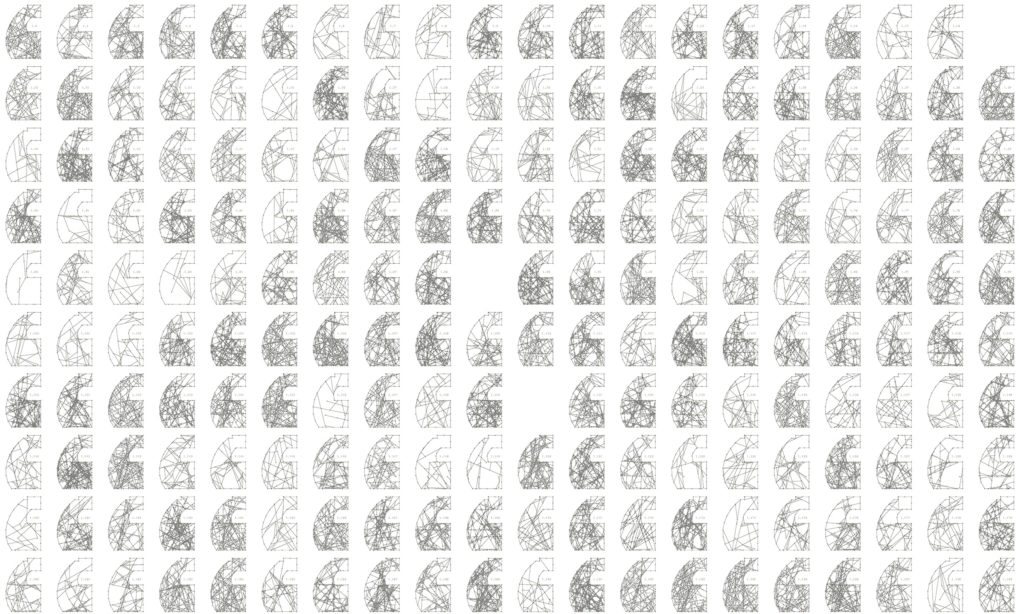By Ravi Akella
The way everyday items – from chairs to cars to power tools – are made is being reimagined through a new process called generative design.
Using artificial intelligence (AI) software and the compute power of the cloud, generative design enables engineers to create thousands of design options by simply defining their design problem – inputting basic parameters such as height, weight it must support, strength, and material options.
A few of the most forward-looking companies in the world, including Airbus, Under Armour and Stanley Black & Decker, are using generative design to solve engineering challenges and come up with design solutions that the human mind could never conceive on their own. With generative design, engineers are no longer limited by their own imaginations or past experience. Instead, they are collaborating with technology to co-create more, better, with less: more new ideas, products that better meet the needs of users, in less time and with less negative impact on the environment.
As with any new technology, however, there’s often some confusion and lack of clarity around what exactly the technology is, and what it isn’t.
So what is Generative Design?
Generative design leverages machine learning to mimic nature’s evolutionary approach to design. Designers or engineers input design parameters (such as materials, size, weight, strength, manufacturing methods, and cost constraints) into generative design software and the software explores all the possible combinations of a solution, quickly generating hundreds or even thousands of design options. From there, the designers or engineers can filter and select the outcomes to best meet their needs.
Imagine if instead of starting a “drawing” or CAD design based on what you already know or ideas that are in your head, you could tell a computer what you want to accomplish or what problem you are trying to solve. For example, say you want to design a chair. Instead of drawing two or three options (maybe 10 if you’re really creative), you can tell the computer you want a chair that supports X amount of weight, costs X much, and uses X material. The computer can then deliver hundreds, if not thousands, of practically and easily manufacturable design options that all meet that criteria and are likely options that you could not conceive on your own. That’s the power of generative design.

A selection of options for a chair created through generative design and factoring in constraints such as load, weight and material. Image courtesy of Autodesk.
What is Generative Design NOT?
Generative design is software that augments an engineer and uses the power of cloud computation and machine learning to explore a whole set of new solutions. It expands the engineer or designers known universe of valid solutions to their design challenge.
By contrast, many of the technologies that masquerade as generative design – topology optimization, lattice optimization, parametrics or similar technologies — are focused on improving a preexisting design, not creating new design possibilities like with generative design.
The confusion arises because the inputs to generative design are similar to the inputs to many optimization tools. However, generative design produces manyvalid (high performance yet cost-effective) designs or solutions instead of oneoptimized version of a known solution.
In addition to creating entirely new solutions, another area where generative design differs and stands out is that it takes manufacturability into account. That means the process of testing products and going back to the drawing board is drastically reduced. Traditional optimization focuses on refining a known solution, which usually involves removing excess material without any notion of how something is made or used. Additional modeling, traditional simulation and testing are then required steps at the end.
With generative design, the simulation is built into the design process. You can specify manufacturing methods like additive, CNC, casting, etc. at the outset and the software only produces designs that can be fabricated with your specified manufacturing method. Or you can explore designs for multiple manufacturing methods.

On the top, the preconceived bracket design from the 2013 GE jet engine bracket challenge is refined using traditional topology optimization. Because there is no awareness of manufacturing processes, it will need to be remodeled again ‘by hand’ in CAD software. On the bottom, Autodesk Generative Design software uses attachment points, strength requirements, weight, materials, and manufacturing method as constraints to produce multiple geometric solutions for the bracket. There is no preconceived geometry as a starting point. In this case, generative design produces 30 design options while topology optimization offers one. Image courtesy of Autodesk.
Another often overlooked benefit of generative design is the ability to consolidate parts. Because generative design can handle a level of complexity that is impossible for human engineers to conceive – and because additive manufacturing can enable the fabrication of the complex geometries that generative algorithms often produce – single parts can be created that replace assemblies of 2, 3, 5, 10, 20 or even more separate parts. Consolidating parts simplifies supply chains, maintenance and can reduce overall manufacturing costs.
With its ability to explore thousands of valid design solutions, built-in simulation, awareness of manufacturability and part consolidation, the reality is that generative design impacts far more than just the traditional notion of design. It’s really about the entirety of the manufacturing process. In some ways, you could argue ‘generative manufacturing’ would be a more apt term.
Because if its expansive impact on the manufacturing process, generative design delivers a leap forward in real-world benefits. It can lead to major reductions in cost, development time, material consumption and product weight.
So let’s look at some real-world applications of the technology.
How are companies using generative design?
Airplane manufacturerAirbusused generative design to reimagine an interior partition for its A320 aircrafts and came up with an intricate design that ultimately shaved off 45 percent (30kg) of the weight off the part. That weight decrease will result in a massive reduction of jet fuel consumed and a reduction of hundreds of thousands of tons of carbon dioxide emitted when applied across its fleet of planes — equal to taking 96,000 passenger cars off the road for a year.
But generative design is not limited to product development, it can also apply to larger scale projects such as buildings and office spaces. A recent project in the MaRS Innovation District of Toronto used generative design to create the floor plan for an office environmentthat would not have been possible to create by humans alone. The architects used generative design to factor in employee wants and needs, including preferences for each person’s work environment.
The project began with collecting data from employees about their work styles and preferences by asking questions such as “Are you a heads-down worker or an interactive one?” It also took into account the teams that should be located near each other for maximum office collaboration. Once the data was collected, the generative design software produced 10,000 options. Human designers then sorted through the options, making trade-offs in a way that only humans can. The result of this human-computer collaboration was one the workers love – and one neither human nor machine could ever have arrived at on its own.
In the near future, items that we use every day, the vehicles we travel in, the layout of our daily work environment and more will be created using generative design. Products may take on novel shapes or be made with unique materials as computers aid engineers in creating previously impossible-to-conceive solutions.
As AI becomes part of all work processes and generative design becomes the norm for product design, it will be exciting to see what we can achieve when we can create more things to accommodate the growth of the global middle class, making them better suited to consumer needs, in less time, with less material waste, less fuel waste, and less negative impact on our planet.
——————————————————————————————————-
This article first appeared in IndustryWeek.
Ravi Akella is director of product management for generative design software at Autodesk.


